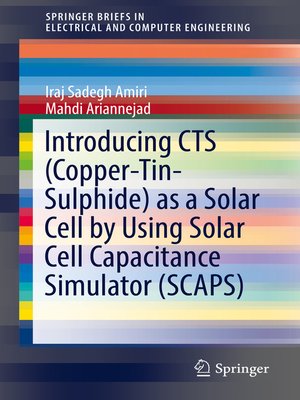Introducing CTS (Copper-Tin-Sulphide) as a Solar Cell by Using Solar Cell Capacitance Simulator (SCAPS)
ebook ∣ SpringerBriefs in Electrical and Computer Engineering
By Iraj Sadegh Amiri

Sign up to save your library
With an OverDrive account, you can save your favorite libraries for at-a-glance information about availability. Find out more about OverDrive accounts.
Find this title in Libby, the library reading app by OverDrive.



Search for a digital library with this title
Title found at these libraries:
| Library Name | Distance |
|---|---|
| Loading... |
This book discusses the enhancement of efficiency in currently used solar cells. The authors have characterized different structures of the solar cell system to optimize system parameters, particularly the performance of the Copper-Tin-Sulphide solar cell using Solar Cell Capacitance Simulator (SCAPS). This research can help scientist to overcome the current limitations and build up new designs of the system with higher efficiency and greater functionality. The authors have investigated the corresponding samples from various viewpoints, including structural (crystallinity, composition and surface morphology), optical (UV–vis–near-IR transmittance/reflectance spectra) and electrical resistivity properties.







